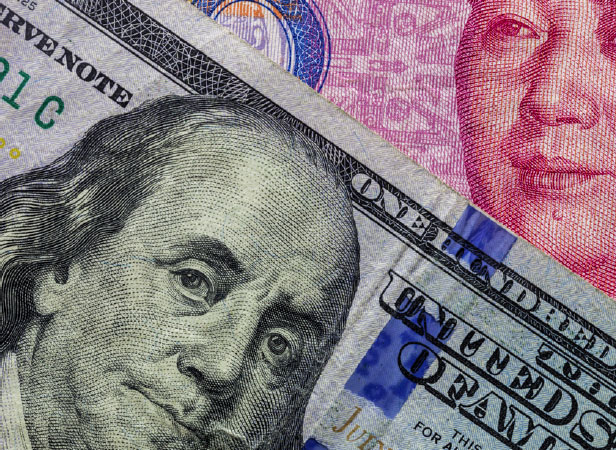News June 17, 2019
Hundreds of U.S. Companies Urge Trump To Nix Tariffs
They said more tariffs could cost the U.S. 2 million jobs and slash GDP by 1%.
Combined with tariffs that are already in place, levies of 25% on an additional $300 billion in Chinese imports would cost the U.S. 2 million jobs, add more than $2,000 in expenses for the average family of four, and cut the nation’s gross domestic product by 1%.
Those statistics, from a study by economic consulting firm Trade Partnership Worldwide LLC, feature in a letter that more than 600 companies and trade associations – including Walmart, Target, Costco and Gap – sent to President Donald Trump late last week.

The letter implores the president to drop the import levies he’s already placed on some $250 billion in Chinese imports and to not impose additional tariffs on $300 billion in China-made goods.
On Monday, the Office of the United States Trade Representative began a public hearing on the possibility of enacting those additional tariffs. During the hearing, American companies said more tariffs will increase costs for consumers. The companies also said they have few alternatives other than China for producing clothing, electronics, and other consumer goods. If the additional tariffs are implemented, virtually everything imported from China would be subject to tariffs, including apparel, footwear and the gamut of promotional products.
“We know firsthand that the additional tariffs will have a significant, negative and long-term impact on American businesses, farmers, families and the U.S. economy,” the letter said. “Broadly applied tariffs are not an effective tool to change China’s unfair trade practices. Tariffs are paid directly by U.S. companies, not China.”
a tariff escalation on the $300 billion of remaining chinese imports will mainly impact US consumer goods via @FTAlphaville https://t.co/zt9jvX3ERB pic.twitter.com/fJfr27oVSi
— Movement Capital (@movement_cap) June 14, 2019
That includes companies in the promotional products industry. In a recent filing with the U.S. Trade Representative’s Office, Top 40 supplier Polyconcept North America said that the tariffs Trump has already imposed on China will cost the company more than $18 million this year. PCNA’s tariff burden would more than double to $45 million if Trump puts tariffs on all Chinese goods, PCNA said. “For a company with $500 million in sales, this represents a sudden and significant increase to our product costs, which must be passed to our customers and (ultimately) to the American consumers,” said PCNA President David Nicholson in the filing.
According to the study from the Trade Partnership, consumer prices for apparel would rise by 5%, shoe costs would go up by 8%, and toy prices would leap by 16%, if Trump slaps tariffs on the $300 billion more in imported products.
Morgan Stanley 1/4: We’ll see impact of #tradetensions through both direct & indirect channels. Direct effects from 25% tariffs on $200bn worth of US imports from China will be more limited, but those effects will be amplified by indirect channels through reduced corporate conf pic.twitter.com/OTQXGUQr3J
— Francesc Riverola - FXStreet.com 🎗 (@Francesc_Forex) June 13, 2019
The U.S. promotional products industry, which imports the vast majority of products sold here from China, is contending with challenges from tariffs. The core issue is rising costs for importing products, which has translated into price increases on certain items. After Trump increased the tariff rate on $200 billion in Chinese products from 10% to 25% in May, suppliers warned that more price increases on impacted products are likely ahead. Should Trump enact tariffs on the remaining $300 billion in Chinese goods, then virtually every promo product imported from China could potentially be subject to some level of price increase.
Bob Herzog, CEO of Top 40 distributor Corporate Imaging Concepts (asi/168962), recently voiced the concerns of many promo pros when he said, “If we have to increase pricing to the end consumer, we will start to push them into other avenues of spending for their marketing dollar.”
Tariffs Hurt the Heartland is the name of the tariff-opposed business coalition that organized the letter sent to Trump. Trade groups for the technology, manufacturing, agricultural and retail industries supported the letter.
There has been no sign that the Trump administration is ready to back off tariffs. Treasury Secretary Steven Mnuchin has said that he doesn’t “necessarily agree” that there will be “significant costs” for consumers as a result of tariffs. Trump has praised tariffs as “beautiful,” saying they’re a highly effective tool in dealings with trade partners and competitors. Recent comments from the president indicate he believes his threat of tariffs on Mexico has compelled America’s southern neighbor to do more to curtail illegal immigration to the U.S. Some analysts say that has emboldened Trump to continue to drive hard with tariffs on China.
Trade tensions between the U.S. and China have been escalating over approximately the last year as the nations work to reach a new trade deal. Beijing has countered U.S. tariffs with tariffs on American goods exported to China. For the U.S., key goals of the trade negotiations are to gain American companies greater access to Chinese markets and to stop the forced transfer of technology from U.S. companies that want to sell in China to state-owned firms in the Asian nation.
